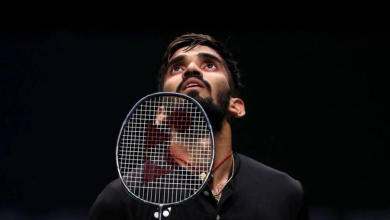India vs Australia: Steve Smith and Co’s chokehold on hosts’ free-scoring lower order has served them well

Consider the first two Tests together, and a very significant aspect emerges. The team that won the toss ended up victorious. It is an indictment of the two pitches on offer, and if the ICC considered the Pune wicket poor, then the same treatment should be meted out to the Bengaluru track as well.
Did the difference in result help change opinion? Perhaps not, because everywhere the magnificence of this second Test is being celebrated. Two teams fighting out every session for four days, exchanging blows like gladiators, with the direction of the match meandering endlessly – yes, it made for a hell of a spectacle. Maybe, Indian fans wouldn’t mind losing a match like that. However, with a 0-2 scoreline though, maybe they would have.
Now, ask that question again. Did the difference in result help change opinion? Perhaps yes. Ask any Australian cricket aficionado and he/she will equally celebrate both matches, irrespective of the outcome. The Bengaluru game was an epic fight, and it did leave a sour taste given the DRS controversy. Yet, the Pune Test would hold a special place in the hearts as well. After all, how many teams – never mind Australian teams – have won here in India, that too by a 333-run margin within three days?
Fan factor isn’t the underlying point here. For there is another common feature of both these Tests, one that has been overlooked in debates over pitches and proper usage of the DRS. In four innings, Australia collapsed once. In the same number of innings, barring those odd sessions which Cheteshwar Pujara and Ajinkya Rahane dominated, there were three-and-a-half Indian collapses. In summation, it is a scathing criticism of this Indian line-up’s fallibility against half-decent spinners on proper turning tracks.
The big scores have simply gone missing, and each run has to be strived hard for. Of course, that is the real fun of Test cricket, as seen amply in the Bengaluru Test. But the collective struggle of the Indian batsmen, barring KL Rahul, until that last session on day three, seemingly puts the team management in an odd quandary. What would happen if this trend – of turning tracks, batting collapses and teams winning matches based on toss – continues for the remaining two Tests as well?
The Australian camp would only be too happy, if so, for they have already achieved their first couple of goals. Avoid a 0-4 whitewash and possibly win a Test, and with two matches remaining, they could be in with a shout to claim this series. In that aspect, their preparatory camp in Dubai seems to have done wonders for their confidence as well as their spin-playing ability.
But facing off against Australia isn’t just a physical fight alone. They are a team that meticulously studies their opponents, and finds that one weak link to take advantage of. It is an oddity in this particular case, because India’s streak of 19 unbeaten Tests didn’t really leave any fragility as such in their squad, much less their playing eleven. From the openers to the middle order, to the bowlers, to the lower order, and to their reserve bench, everything seemed rounded off. Even so, Australia found a way of hurting this Indian team, that too where it hurts most.
In the hullabaloo over pitches, and playing the game in the right spirit, the simple fact that the Indian lower order has failed to fire in the two Tests has been lost. Sample this. In Pune, the five bowlers contributed 11 and 16 runs in the two innings, respectively. In Bengaluru, the four bowlers contributed 10 and 13 in the two innings.
It is a far cry from the past three Test series (barring Bangladesh) when the lower order played a vital role. So much so that runs scored by the likes of Ravichandran Ashwin, Jayant Yadav and Ravindra Jadeja not only helped India win matches, these wins also contributed to that 19-Test unbeaten run, thus propelling the side to its current No 1 Test status.
Go back to the tour of West Indies last summer. In the first Test of the series in Antigua, India were placed at 236/4 when Ashwin scored a hundred, and along with Virat Kohli, took the total to 566. Then, in St Lucia, the situation was more dangerous. India were reeling at 126/5, when Ashwin partnered with wicketkeeper Wriddhiman Saha and their hundreds paved the way for safety, and victory thereafter. At Jamaica, in between, Amit Mishra and Umesh Yadav contributed runs too.
As the home season began, India played around with their bowling combinations continuously. And one aspect of this move was to give ample opportunity to the bowlers so as to help them achieve confidence in their batting abilities. Against New Zealand at Kanpur, Kohli delayed the declaration to help Ravindra Jadeja get his half-century. This same method was repeated in Mohali against England, as Jadeja closed on a hundred while Jayant scored his maiden half-century.
This phenomenon – of the lower-order contributing keenly – has helped India grow as a batting unit, whilst encouraging the attacking ploy of playing with five bowlers at every possibly opportunity. It has helped the team to change gears, and attack the opposition at will, thus taking initiative in the game. The Mumbai Test is a perfect example of this, when Jayant scored his maiden hundred and gave company to Kohli as the duo crushed England’s spirit. Did anyone expect them to fold up within the next two sessions and lose by an innings soon after?
The dominance of bat over ball in an Indian home season is a foregone conclusion. So is the ascendancy of spin, and in that light, the performances of the Indian pacers have been a revelation. But the real highlight of this long home season was how the Indian lower order matured, and with sizeable contributions, helped the team’s cause. In one fell swoop, Australia made sure they cut that supply line to choke India’s runs.
In that light, pitches in these first two Tests haven’t helped either. The raging turner in Pune and the topsy-turvy wicket in Bengaluru both tested the top order batsmen. It is only reasonable then that the lower order would struggle. Yet, for none of them to stand up and be counted in four successive innings ought to be a matter of concern for the team management, in what is proving to be a keenly contested series.







